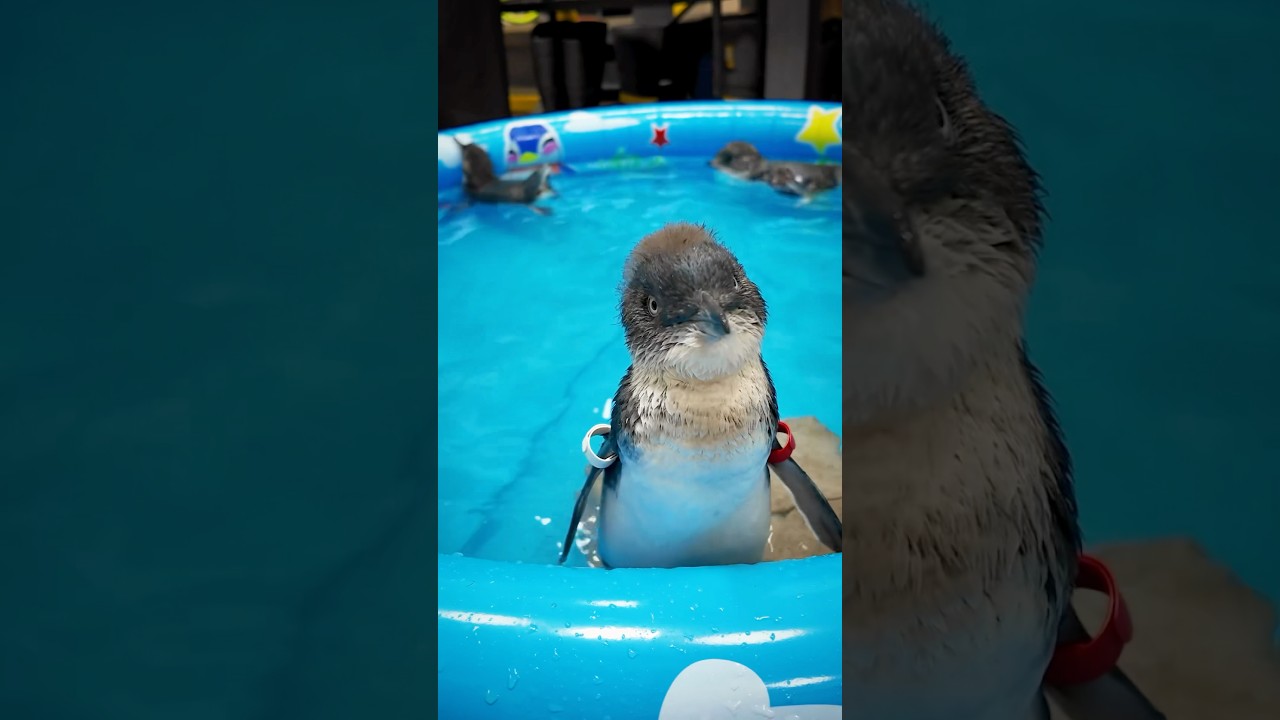- The development of penguin chicks and the significance of their first swim.
- The role of parental guidance in the swimming process of penguin chicks.
- Adaptations and survival strategies of penguin chicks in aquatic environments.
- Conservation efforts and challenges impacting penguin populations.
- The role of zoological institutions in penguin research and public education.
Penguins are remarkable birds, uniquely adapted to thrive in some of the Earth’s harshest environments. One critical milestone in a penguin chick’s life is their first swim. This event is not only vital for their survival but also marks a significant step in their development. Penguin chicks, after weeks of being nurtured on land, exhibit both innate behaviors and learned skills when they take to the water for the first time.
From the moment penguin chicks hatch, they are covered in downy feathers, which are not waterproof. Unlike adult penguins, these chicks are initially land-bound, reliant on their parents for warmth and food. The developmental phase leading up to their first swim involves growth, feathering, and learning important survival skills under the watchful eyes of their parents.
Parental care plays a pivotal role in ensuring that penguin chicks are prepared for the aquatic world. Parent penguins teach their fledglings how to swim, forage, and avoid predators. They guide them to the water’s edge and sometimes physically assist them into the ocean, offering protection and encouragement. This process varies across species, as emperor penguins, for instance, tend to be more solitary, while other species like the Adelie penguins might be part of larger groups.
Adaptation to swimming is rooted in the evolutionary biology of penguins. Their streamlined bodies, strong flippers, and webbed feet are all features that enable efficient swimming. These adaptations allow penguins to reach impressive speeds underwater, a necessary skill to catch fish and evade predators. The first swim is a practical application of these evolutionary traits and is crucial for developing their hunting abilities and understanding environmental cues.
Conservation efforts are vital in protecting penguin populations, which face numerous threats, including climate change, overfishing, and pollution. These environmental challenges affect the availability of food and breeding habitats, putting chicks at greater risk. Organizations worldwide work tirelessly to ensure that penguin habitats are preserved and that there is ample research to mitigate these threats. Initiatives like protected marine areas and sustainable fishing practices are in place to help safeguard their future.
Zoological institutions play a significant role in penguin conservation and public education. They provide controlled environments where visitors can learn about penguins and their ecosystems. These institutions also contribute to research efforts by studying penguin biology, behavior, and reproduction. Educational programs raise awareness about the importance of preserving natural habitats and the impact of human activities on wildlife.
Penguin chicks’ first swim is more than a mere rite of passage. It represents a culmination of biological development, parental investment, and survival instincts honed over millennia. This event is a testament to nature’s resilience and adaptability, a sight that continues to inspire conservationists and nature enthusiasts alike. By understanding and protecting these remarkable creatures, we contribute to the health and diversity of our global ecosystems.
*****
Source Description


